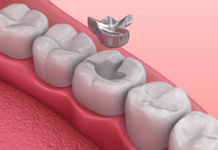Scientists have long speculated about the prevalence of dental caries and their potential long-term risk factors among the geriatric population. Recently, the topic was further explored in an article titled, “Caries disease among an elderly population—A 10-year longitudinal study.” The piece was published in the International Journal of Dental Hygiene, which is the official scientific peer-reviewed journal of the International Federation of Dental Hygienists.
A Closer Look at the Rising Elderly Population
Due to medical and technological advances around the world, the population of people over the age of 65 is growing at an unprecedented rate. While people in that age group currently account for almost 9 percent of the global population, the National Institute of Health estimates the demographic is expected to grow to 1.6 billion people or 17 percent by the year 2050. In America alone, the 65-and-over population is projected to nearly double from 48 million to 88 million by that same year. The global life expectancy at birth is also expected to jump from 68.6 to 76.2 years old.
However, it’s important to note that although people are living longer, it doesn’t necessarily mean their quality of life will improve. Nations with a larger proportion of older adults face a heavier strain on their health care system, housing supply, and other resources.
Older people are more vulnerable to serious diseases due to decades of unhealthy lifestyle choices. Common risk factors include over-consumption of tobacco, alcohol, and other drugs. Less physical activity and a poor diet lacking nutritious fruits and vegetables can also cause health issues later in life.
Besides physical ailments, older adults are more susceptible to dental caries, which is one of the more prevalent oral diseases among that age group. Patients who suffer from cognitive or functional impairment may find it more difficult to practice proper oral hygiene daily. Older people who are of lower socioeconomic status may also face an additional hurdle due to a lack of transportation to local dental offices and an inability to pay for the services.
About the Decade Long Research Study
The research aimed to investigate the prevalence of dental caries and identify potential risk factors for dental caries in geriatric patients. Scientists conducted a decade-long study on 273 participants from 2008 to 2018. They examined the data from questionnaire surveys and clinical examinations which were given twice during the beginning and end of the ten-year period. The participants were 65 at the start of the study. The researchers kept track of the patient’s dental caries as well as their socioeconomic status and dental habits.
By the end of the study, the researchers learned that a quarter of the participants had dental caries lesions, which wasn’t a statistically significant increase. The participants lost an average of two teeth during the decade-long study. However, they did note that participants who practiced infrequent oral hygiene routines such as brushing their teeth only once a day were more likely to develop dental caries lesions. The researchers believe this provides hope that people over the age of 65 can still maintain good oral health.
It is up to clinicians in the dental community to continue their efforts to learn more about the senior population. This will make it easier to treat this growing population by addressing their specific oral hygiene needs, such as preventing root caries and decreasing the number of people with edentulism.











